  
|
||
|
|
||
Boston Bruins
The Bruins have won 6 Stanley Cups and have played at TD Garden, Boston MA since 1995. |
Montreal Canadiens
The Canadiens have won 24 Stanley Cups and have played at the Bell Centre, Montreal QC since 1996. |
|
Chicago Blackhawks
The Blackhawks have won 4 Stanley Cups and have played at the United Center, Chicago IL since 1994. |
New York Rangers
The Rangers have won 4 Stanley Cups and were the first NHL franchise in the U.S. to win it in 1926. They have always played at the various versions of Madison Square Garden, New York City. |
|
Detroit Red Wings
The Red Wings have won 11 Stanley Cups, the most of any U.S. team, and have played at the Joe Louis Arena, Detroit MI since 1980. |
Toronto Maple Leafs
The Maple Leafs have won 13 Stanley Cups and have played at the Air Canada Centre, Toronto ON since 1999. |
|
|
All of the Original Six franchises still exist, with no major identity changes and no relocations to other cities. |
||
CriticismsThe Original Six era has been criticized for having a playoff system which was too easy (only two teams were eliminated after the regular season) and for featuring too many dominant teams (Montreal never missed the playoffs between 1949 and 1967 and Detroit and Toronto only missed three times each, leaving the other three teams to compete for the one remaining berth). Boston, Chicago, and New York were put at a competitive disadvantage by the rule that each team had exclusive rights to negotiate contracts with promising local players within 50 miles of its home ice. Detroit was less affected by this, since southwestern Ontario was part of its local talent pool. If a player was not within the 50-mile limit, that player was free to field offers from any team. Once that player agreed to a sponsorship-level contract, the NHL club could assign him to its sponsored junior squad - its "sponsorship list". In practice, all six teams recruited players from Canada by sponsoring minor league, junior and amateur teams. This phenomenon had the impact of limiting player movement, and as a result the Original Six rosters were very static. Until the burgeoning of career lengths in the 1980s, only one twenty-year player in NHL history, Larry Robinson, started his career after 1964, and it is generally accepted that the weakest Calder Trophy winners (Rookies of the Year) of all time were selected in the 1950s and 1960s. In partial consequence, the league was almost entirely composed of Canadians who had come up through the junior and minor pro leagues. While the league boasted a handful of good American players during the 1940s (including All-Star goalkeepers Frank Brimsek and Mike Karakas, defenceman John Mariucci, and forward Cully Dahlstrom), these were mostly products of the American Hockey Association which folded in 1942, and almost all played for the Chicago Black Hawks, whose owner, Major Frederic McLaughlin, was a fiercely patriotic man who tried to stock his roster with as many American players as possible. Very few all American-developed NHL players emerged in the 1950s and 1960s, when Tommy Williams was the only American to play regularly. Both Williams and Mariucci complained about anti-American bias, and U.S. Olympic team stars John Mayasich and Bill Cleary turned down offers from NHL teams. The only European-born and trained player of the era was Sweden's Ulf Sterner, who briefly played for the Rangers in 1965.
After World War II, all six NHL owners consistently rejected any bids for expansion, and in the eyes of many observers changed the criteria for entry every time with a bent to defeating any such bid. They also reneged on promises to allow the still-extant but dormant Maroons and Americans franchises to re-activate. |
CorruptionThe league tolerated monopolistic practices by the owners. At one point, for instance, Red Wings owner James E. Norris effectively owned the Black Hawks as well, and was also the largest stockholder in the Rangers. He also had significant influence over the Bruins by way of mortgages extended to the team to help keep it afloat during the Depression. This led some critics to joke that NHL stood for "Norris House League." The control of owners over their teams was absolute. Players who got on the wrong side of their team owner were often harshly punished, either by being traded out of town or sent to the minors. An example of this is the case of bruising Red Wings forward Ted Lindsay who, after agitating for a players' union, was sent to the last-place Black Hawks. Norris' conglomerate did not invest in Boston, Chicago, and New York; these teams mostly just filled dates for the Norris arenas. A measure of the dominance of Detroit, Montreal, and Toronto in the era can be seen in that between the Bruins' Stanley Cup wins in 1941 and 1970, every single Cup (save for Chicago in 1961) was won by the Red Wings, the Canadiens, or the Maple Leafs, and those three teams failed to make the playoffs only eight times combined in the era. Labor conditions for the players were also poor. Players' medical bills were paid for only two months after an injury. Moreover, whenever players were sent to the minors, they not only had their salaries cut, but their relocation costs were not covered. The players were also not paid for off-season promotions, and did not share in the funds of promotions such as trading cards as was done in baseball.[citation needed] In the earlier era, players were allowed to play other sports, such as lacrosse, for money in the off-season, but this was disallowed in the standard Original Six-era contract. The pension plan, formed in 1946, while ostensibly for the players' benefit, was kept secret, hiding large amounts of money under the control of the owners. The pension plan was only exposed in 1989, when it was found that a $25 million surplus existed. The stark labor conditions led to several players' disputes, including a 1957 anti-trust action and attempted union formation, and subsequent actions in the early 1960s by Toronto players Bob Baun and Carl Brewer, leading to the 1967 formation of the NHL Players Association.
|
|
|
|||
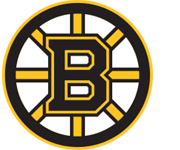 The Boston Bruins have been in existence since 1924, and is the league's third-oldest team and its oldest in the U.S.
The Boston Bruins have been in existence since 1924, and is the league's third-oldest team and its oldest in the U.S.
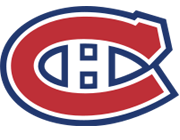 Founded in 1909, the Montreal Canadiens are the longest continuously operating professional ice hockey team.
Founded in 1909, the Montreal Canadiens are the longest continuously operating professional ice hockey team.
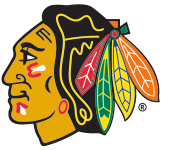 The Chicago Blackhawks joined the NHL in 1926 with most of their players coming from the Portland Rosebuds of the Western Hockey League.
The Chicago Blackhawks joined the NHL in 1926 with most of their players coming from the Portland Rosebuds of the Western Hockey League.
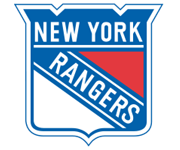 The New York Rangers began in 1926 as an expansion franchise.
The New York Rangers began in 1926 as an expansion franchise.
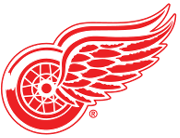 Detroit Red Wings joined the NHL as the Detroit Cougars in 1926. The new Detroit franchise purchased the players of the folded Victoria Cougars WHL club to play for the team.
Detroit Red Wings joined the NHL as the Detroit Cougars in 1926. The new Detroit franchise purchased the players of the folded Victoria Cougars WHL club to play for the team.
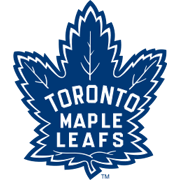 The Toronto Maple Leafs were formed in 1917 as Toronto Arenas. They changed their name to the Toronto St. Patricks in 1919 and became the Maple Leafs in 1927.
The Toronto Maple Leafs were formed in 1917 as Toronto Arenas. They changed their name to the Toronto St. Patricks in 1919 and became the Maple Leafs in 1927.

